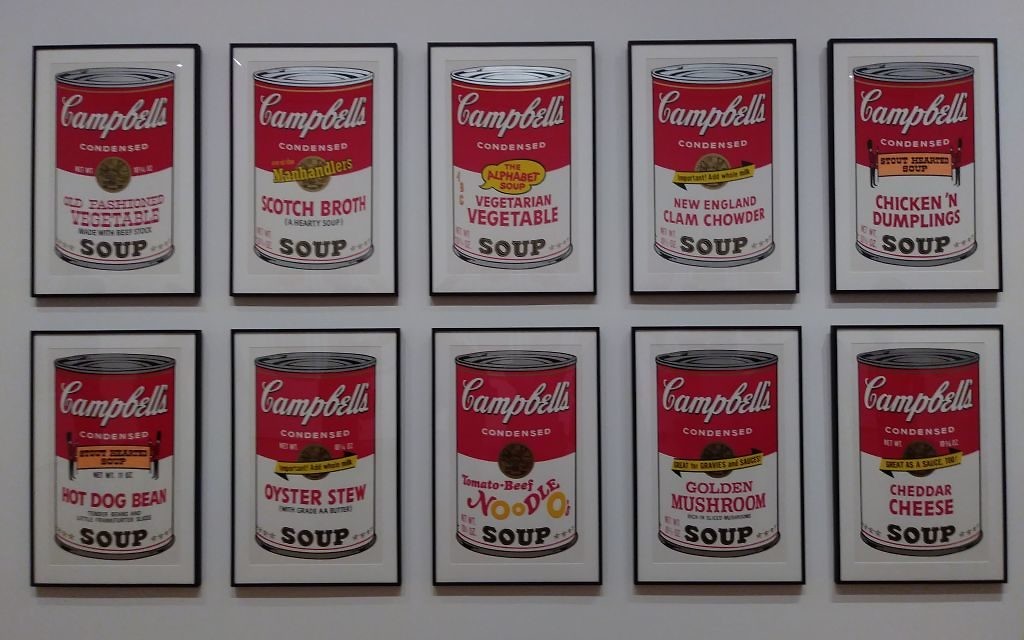High Shows Why Warhol’s 15 Minutes Never End
The series reflects movements of the 1960s that remain at the forefront of politics.
The High Museum of Art recently opened “Andy Warhol: Prints From the Collections of Jordan D. Schnitzer and His Family Foundation,” the largest exhibition of its kind, showcasing nearly 250 iconic works, including “Marilyn Monroe,” “Campbell’s Soup I” and “Mao.”
Each piece is a glimpse into the life and mind of Warhol, from his early work, when he was transitioning from graphic design to fine art, and to his later work, when he was the superstar of New York’s art scene. He was known for breaking from the tradition of pastoral art and using graphic design to illustrate that art exists in even the most benign spaces.
The works speak to issues that are just as relevant today as they were when Warhol was creating them, said Jordan Schnitzer, the president of the Jordan Schnitzer Family Foundation in Portland, Ore.
Get The AJT Newsletter by email and never miss our top stories Free Sign Up
“They’re no different than newspaper writers or TV commentators. They’re pushing the envelope on things that are often uncomfortable for us,” said Schnitzer, who is Jewish. “They help us shape our values and ask, ‘Who are we? What’s important to us?’ And perhaps no one has done that better in the last 50 years than Andy Warhol.”
The Andy Warhol Foundation for the Visual Arts had much of Warhol’s early work and contacted Schnitzer about bringing his pieces under the foundation’s protection. Schnitzer bought additional pieces from auctions and built the collection, most of which is now at the High.
The famous “Campbell’s Soup I” series is an example of Warhol turning household names into political and social commentary. He came up with the idea after being rejected by the Leo Castelli Gallery in New York. Warhol, who grew up poor, ate a lot of Campbell’s soup and as an adult preferred soup for lunch.
The series of 32 cans of soup went on exhibition in 1962 at the Ferus Gallery in Los Angeles in Warhol’s first show. Each piece sold for $100; more than 30 years later the series was sold for $10 million.
The series reflects a movement of the 1960s that Schnitzer said remains at the forefront of politics.
“Women’s rights were an issue in the United States in the 1960s. If I were an artist and I wanted to address women’s right in a different way … how do I do it?” Schnitzer said. “It was something you could leave out of the house and not spend four or five hours in the kitchen cooking, and you could be a more productive member of society. Campbell’s Soup was the beginning of the feminist movement.”
Themes of consumerism, media and materialism are at the core of Warhol’s work. He dissects the idea of manufactured fame with images of John F. Kennedy’s assassination, signaling the destruction and fragility of the idyllic Camelot.
By addressing how images are a tool in manufacturing fame, graphic design and screen printing suggest any item, even people, can be made into hot commodities. His use of repetition in “Marilyn Monroe” explores the power of one-dimensional images in the process of commercialization.
“We spend much of our lives seeing and not observing,” reads a Warhol quote used in the exhibit. In 1969, he and British journalist John Wilcock launched Interview Magazine, a platform for in-depth profiles with the world’s pop icons. The publication was Warhol’s way of capitalizing on and resisting the commodification of people.
The obsession with fame played out in Warhol’s life. He stood as a titan in the New York art and entertainment world. His own social circle included Madonna, Jane Fonda, Mick Jagger, Liza Minnelli, fashion models, and art darling Jean-Michel Basquiat, whose notoriety Warhol helped manufacture.
The High exhibit’s Warhol Factory Room is lined with graffiti-covered tinfoil, graphics of Studio 54 VIP tickets, and celebrity portraits, such as Jimmy Carter. To Warhol, fame was based on a formula of exclusivity, embracing the unusual and repetitive imagery. He is quoted as saying, “In the future, everybody will be world-famous for 15 minutes.”
Michael Rooks, the High’s Wieland family curator of modern and contemporary art, organized the exhibit, which runs through Sept. 3. He said Warhol often explored media bombardment, an issue that has only grown with the advent of Facebook, Twitter and Instagram.
Warhol had a gift for looking back while also looking forward, Rooks said.
“He foreshadows our culture’s obsession with media and its subtext,” Rooks said. “In the same token, Warhol was looking at 50 years of fashion, sensationalism and political strife.”







comments